Yes, one of the “charter members” of LA golf club and LA Country Club!
Category: Los Angeles Golf History
Ben Hogan on the Golden Trail at 19!
1932 Olympics at Billy Bell’s Sunset Fields Public Golf Course
The Warren G. Harding Memorial Golf Course turned 98 on August 11, 2021.
Harding Municipal Golf Course in Griffith Park, Los Angeles, opened on August 11, 1923, as Griffith Park Course No. 2. It was the first all-grass links in the park. A country club for the masses!
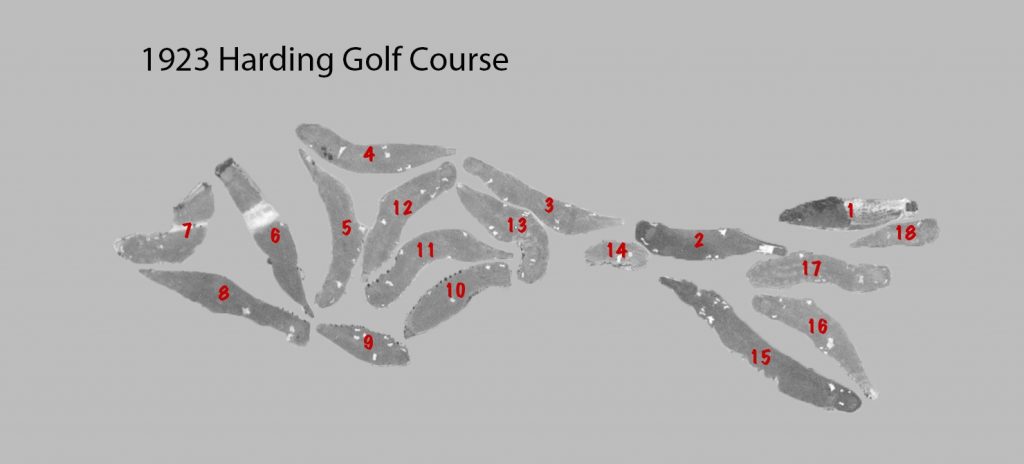
Name: Griffith Park Course No. 2, Warren G. Harding Memorial (renamed 1924)
Nickname: Riverside
Course: 18 Hole, all grass tees and greens.
Yards: 6423 yards
Par: 444444453 – 444435443 – 36 – 35 – 71
Open: August 11, 1923 – Postponed from August 4, due to the death of President Harding on August 3.
Green Fee: $1
Ten plus holes remain from the original 1923 layout.
Harding – 1,2,3,5,6,14,16, (4, tee, fairway – 1923 H13)
Wilson – 5,6,13 (10, tee, fairway – 1923 H10)
Architect: George C. Thomas Jr.
Construction Committee: chair. Edward B. Tufts (SCGA, CGA, LACC), Mrs. Ann Trabue (chair. Golf Advisory Board)
Assistants: Max Behr, William P. Bell
Superintendent: Carl Worthen
Professional: S.C.P.G.A. sec. J.A. “Pat” Patterson (absent – at National Open)
Park Commission: Pres., Mrs. Martha McCann, master of ceremonies
City of L.A.: Councilman Ralph Criswell (filling in for Mayor Cryer) accepted the new course from Ed Tufts.
Opening Exhibition Matches – 1 PM
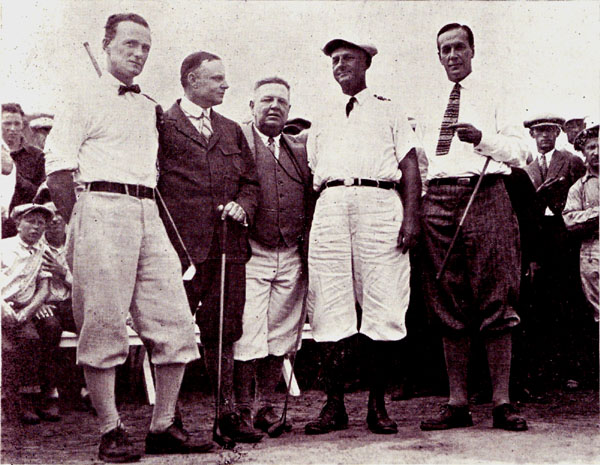
The designer of the course, George C. Thomas Jr., drove the first ball in an amateur foursome. He was paired with Southern California and British Amateur champion, Willie Hunter, playing against Wilshire CC’s, Norman Macbeth and Annandale’s A.D.S. Johnston. Hunter and Thomas won the 18 hole match, 1 up.
The amateurs were followed by a foursome of professionals led by LACC’s Vic Dalberto and ex-LACC and Open champion Hutt Martin, who won their match, 3 up 2 to play, from Midwick Country Club’s Chick Fraser and Pasadena Golf Club’s Mel Smith.
The following day the course was open to the public for $1 green fee. Over 400 golfers played Course No. 2 (Harding), and 250 played the old No. 1 sand-green links.
What a gift they gave us!
©2021 jib jones – golfhistoricalsociety
England, Canada, and California’s Willie Lock – Through The Green
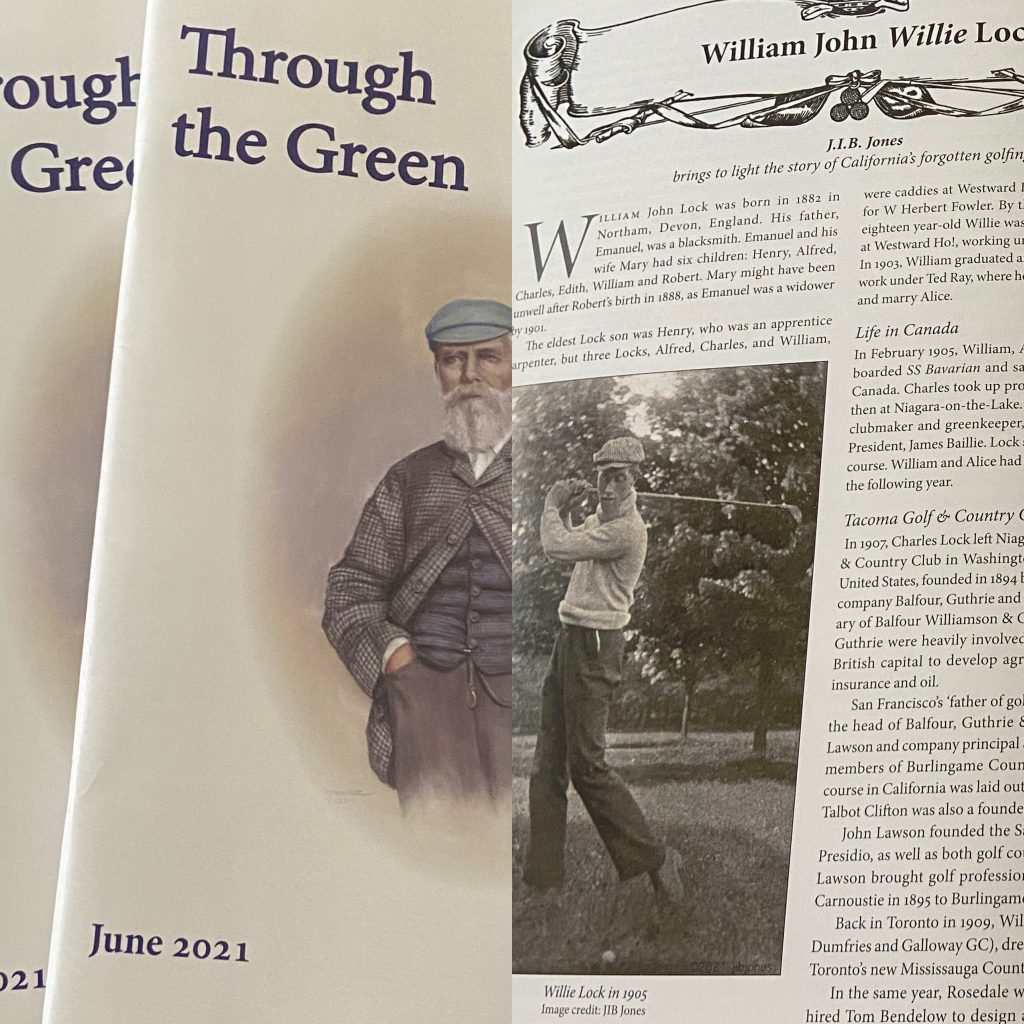
It is a wonderful honour for me to have my short story of legendary English golf professional Willie Lock published in the British Golf Collectors Society‘s June edition of Through The Green! And for those who are still patently unaware, his name was LOCK.
While researching English golf course architect William Herbert Fowler’s work in California in the 1920’s for Derek Markham’s A Matter of Course, Willie’s name kept coming up, forcing me to investigate a lost legend in English, Canadian, and Californian golf history. Willie had caddied for Fowler at Royal Devon before starting work as an apprentice under club making legend Charles Gibson.
From Royal Devon to Ganton, to Rosedale in Toronto, Riverside (CA), Los Angeles and San Francisco, Willie Lock was instrumental in raising the art of golf professional to a new level. Lock was a master club maker, having made Ted Ray’s famous driver when he was at Ganton. One of Willie’s most famous golf courses – San Francisco Golf & Country Club – is credited to Albert Tillinghast. According to his peers and golf writers of the day, Tillinghast blessed Lock’s plans when he visited the site when the course was already two years into construction.
Willie Lock was also credited with initiating the shift of golf tournaments to Red Cross benefits during World War I, as well as serving as President of the Northern California Professional Golfers Association.
©2021 golfhistoricalsociety – JIB JONES.
A Matter of Course – The Life of William Herbert Fowler 1856-1941
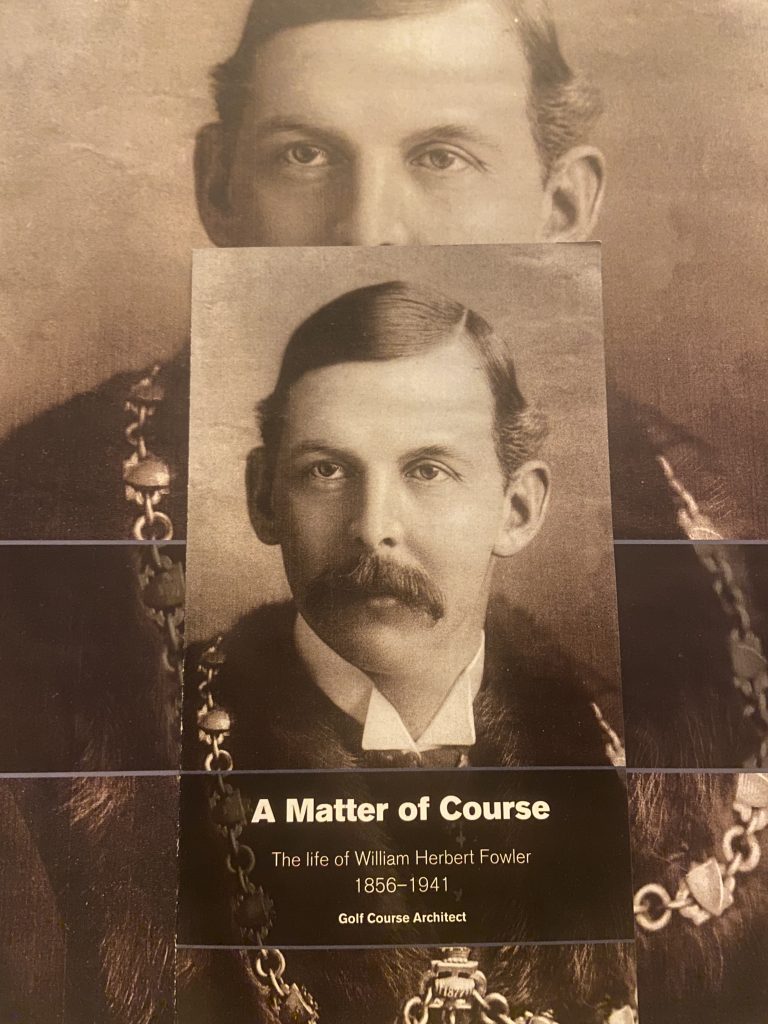
A Matter of Course is a new book written by Derek Markham and published by Markham & Truett.
The story of legendary golf course architect William Herbert Fowler. The book is a proper biography of a most interesting life, mostly well lived.
I contributed research to the chapter, “American Adventures,” written about Fowler’s work in California, which included Los Angeles Country Club, Pebble Beach and the Del Monte Hotel courses, the Presidio, Burlingame Country Club, the no longer existing Ambassador/Rancho Golf Club, Olympic Club, Lincoln Park, Sequoyah, Del Paso, Crystal Springs, Menlo C.C., and others!
This is a small print of 650 books that can be ordered by emailing Philip Truett:
philip@truett.co.uk
or ordering online from Browns Books
105 Years of the Brentwood Country Club (1916)
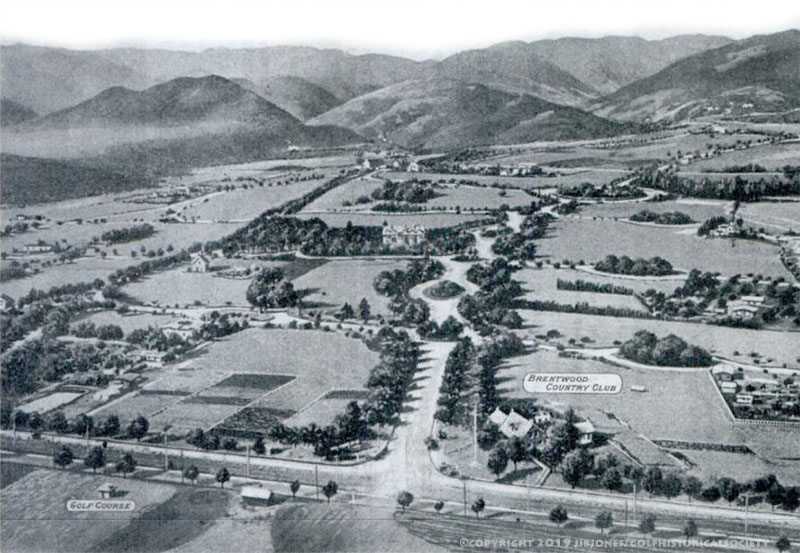
Born as the Santa Monica Country Club on July 6, 1915, the club secured 133 acres by purchase and lease and planned an eighteen-hole golf course, twenty tennis courts and a polo field, at what was then Brentwood Park, Santa Monica.
Tennis champion Tom Bundy was founding president, with Thomas McCall of the Los Angeles Country Club, vice president. Directors included Mayor Dudley of Santa Monica, real estate man Robert Marsh, Riverside’s Frank Miller, and class amateur golfer and LACC member Norman Macbeth.
Old-time polo players George Waring, and J.B. Proctor, along with tennis players, Claude Wayne, the Sutton and McCall sisters, Herman Janss, King Gillette, Stanley Anderson, and Judge Works, were some of the other charter members.
By the end of July 1915, the club was renamed Brentwood Country Club. Architect Frank T. Kegley designed a clubhouse and trees were planted to enhance the site.
On Saturday, January 8, 1916, Thomas McCall met with golf expert William Watson of St Andrews, Chicago and Los Angeles, and planned the layout of the holes. Under the direction of McCall and his golf advisory committee of E. S. Armstrong and Norman Macbeth, work began on Monday clearing and smoothing the grounds, before constructing Watson’s novel double circle all-grass 18-hole sand-green golf course.
105 years ago on Saturday, March 25, 1916, the new Brentwood Country Club held their official opening with nine-holes ready to play and the temporary clubhouse (donated by Herman Janss) outfitted with lockers, showers and baths. The 3,004 yard, par 35, front nine would be followed in the summer by the opening of the second nine. Hutt Martin of LACC acted as host professional for a series of putting and driving contests played over the opening weekend. Clarence Mandeville was then hired as the club’s first professional instructor, and the youngest on the West coast.

105 Years of the Brentwood Country Club 1916 by J.I.B. Jones
©2021 jib jones/golfhistoricalsociety
Protected: The Highest Score on a hole in a major Golf competition in Southern California
LACC’s SOUTH Course Turns 100!
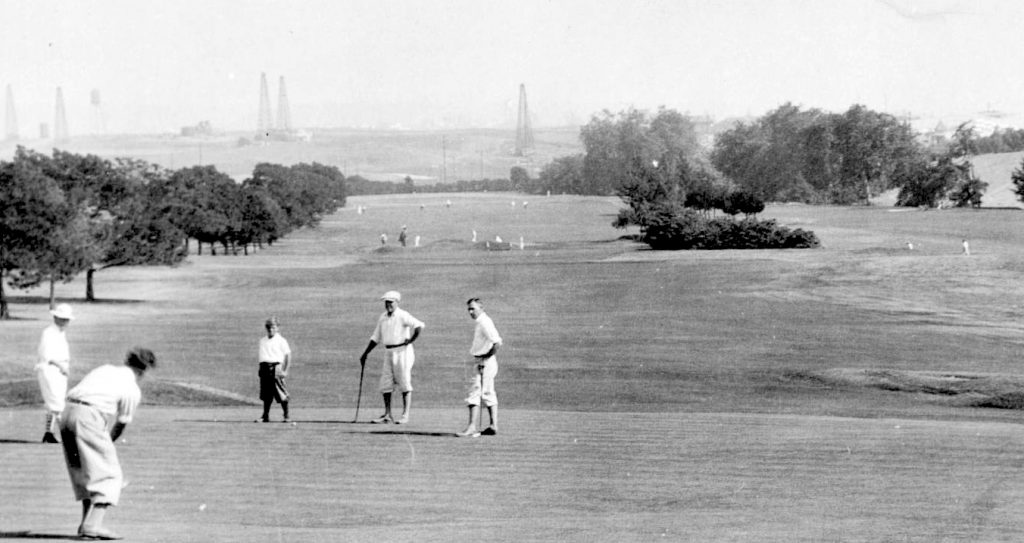
On Washington’s Birthday, February 22, 1921, the Los Angeles Country Club officially opened its new William Herbert Fowler designed South course.
Fowler was asked to keep as many of the existing grass fairways and grass greens from the original 1911 LACC Beverly links in his plans when designing two new 18-hole courses.
By 1920 the club had acquired additional land south of Wilshire Boulevard and Fowler remodeled the front nine and added nine new holes, seven of them on the new land and two north of Wilshire, to make the new South course. He also redesigned six old holes north of Wilshire, and added twelve new ones to make the North course that opened in August 1921.
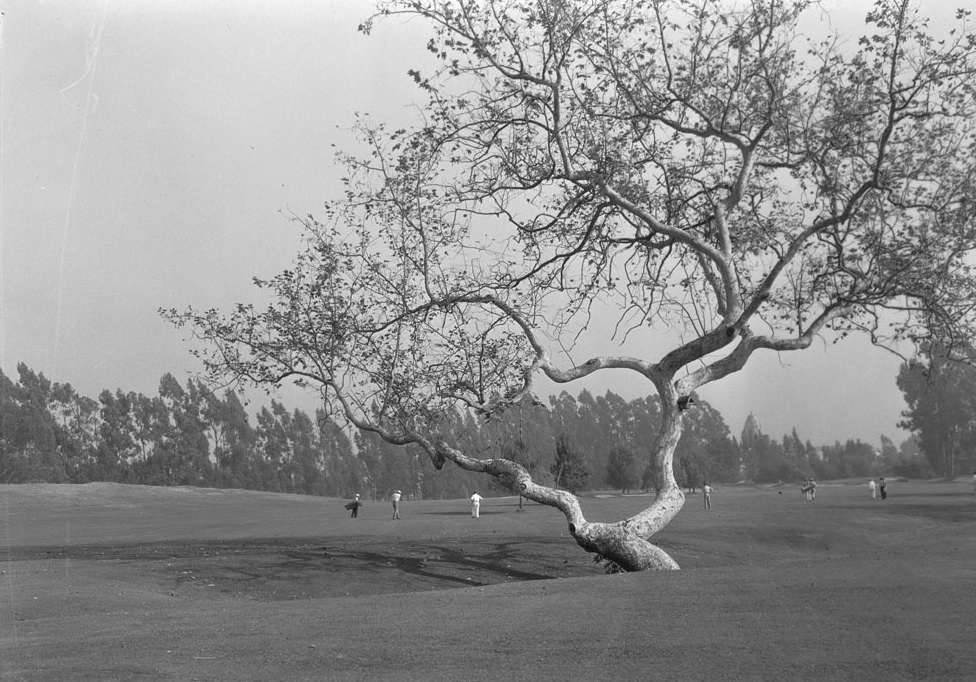
LACC, SCGA, PCGA and CGA legend Edward B. Tufts and new LACC member George C. Thomas Jr., led the green committee for both new courses and supervised construction with Greenkeeper Charlie Cavanaugh and his assistants. Another man at hand was LACC head professional and golf legend John Duncan Dunn who might have had a word to say about Fowler’s design.
(My great uncle Richard Brook worked under Dunn at LACC in 1920-21. His twin brother Tom worked at the Beverly Hills Hotel as golf instructor – small world!)
George C. Thomas Jr., wrote in Pacific Golf and Motor that, “the first nine of the South course will be nearly the same as the old lay-out, except for new greens on the second, sixth and seventh, and new tees on the eighth and the ninth.”
“The second nine will be all new holes.”
Before the South’s opening on the 22nd the final version of the Beverly course hosted the 1921 Southern California Open from February 6 to 8, using none of the new tees, greens or holes. The three-day event started with the pro-am, followed by two days of 36-hole medal play.
Unfortunately, the tournament was hampered by severe winds, up to 70 mile per hour and super dry conditions, making it nearly impossible to stop a ball from any height on the greens. It got so bad that George Thomas himself was out on the course drenching the greens to keep them playable.
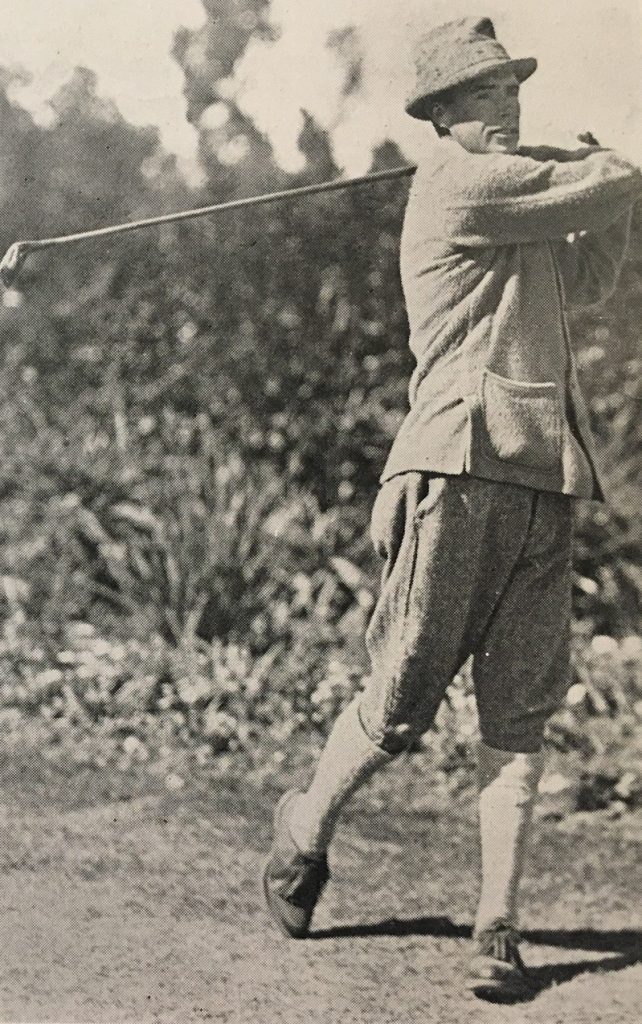
LACC’s ex-assistant professional from Carnoustie, Hutt Martin (297) won the tournament. American Eddie Loos (299) was 2nd, and LACC’s Everett Seaver (309) was low amateur finishing in 8th place overall. Leo Diegel had the low round of the tournament and claimed the course record of the South with a 70 during his 4th round. LACC member William Armstrong won the pro-am with Diegel. Armstrong donated the “bridge to the 18th.”
The new South course greens were perfect by February, but the fairways were still rock laden on the back nine and were not used in competition until after the Southern California Amateur in April.
The South course lasted through many iterations until it was redesigned in 2015 by Gil Hanse who retained parts of some original holes that we can still enjoy today! Thanks for the century!
©2021 jib jones – golfhistoricalsociety
Norman Macbeth Jr., ref. note

Norman Macbeth Jr., was born in Bolton, England in 1879, and grew up playing at Royal Lytham & St Annes golf club where he won the club championship three times while still in school. After an engineering apprenticeship in India with his father’s company he emigrated to Indianapolis, Indiana, in 1903.
Norman married American Lucia Holliday in 1907, and they moved to Pittsburgh where Macbeth played on the Oakmont Golf Club Leslie Cup team with W.C. Fownes Jr., and on the 1909 Pennsylvania State golf team with Albert Tillinghast.
#1 son was John Holliday Macbeth born in 1908. He drowned in 1919 while Norman was in France working for the Red Cross during WW I.
The Macbeth’s moved to Los Angeles in 1910, with Norman working for the Riverside Portland Cement company. The company supplied cement for the Los Angeles Aqueduct and half the roads that we still drive on in the 21st century.
#2 son was Norman Macbeth III or Jr., born in Los Angeles in 1910. He was also a golf champion and lived until 1989.
Norman joined the Los Angeles Country Club and won numerous amateur golf titles over the next several years.
#3 son was Alexander born in 1915 and died in May 1920. Cause unknown.
Macbeth volunteered for the Red Cross in France, where he drove an ambulance, and managed to play at least one round of golf!
He returned to Los Angeles in August 1919, and was soon elected chairman of the Green committee creating the new Wilshire Country Club golf course in Hancock Park, which became his non-working life’s passion.
Norman was also playing a full schedule of club tournaments at Los Angeles Country Club where noted golf architect John Duncan Dunn was professional and George C. Thomas Jr., and Herbert Fowler were making history designing and building the new North and South courses.
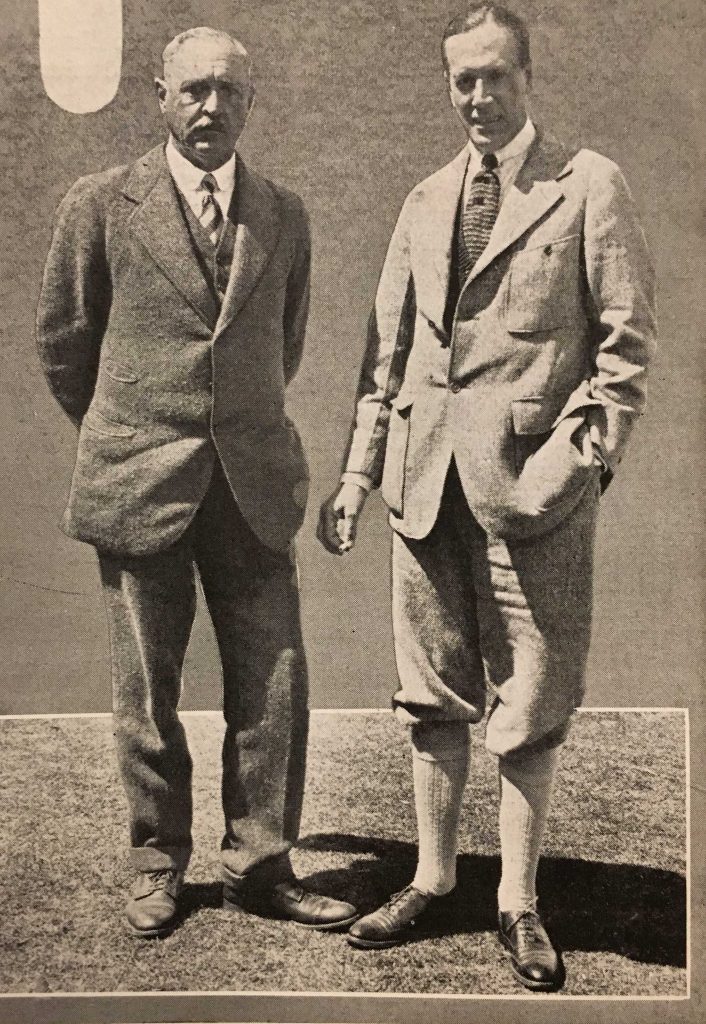
Wilshire Country Club green committee.
The new Wilshire Country Club course was completed and open for member play in December 1920. Macbeth led the club team and green committee and was elected to the USGA Green Section. He was also a member of the Los Angeles Traffic Commission.
Norman and Lucia had an uncontested divorce in 1928.
In 1934 Norman married Lucille Chandler, ex-wife of Wilshire CC founder Raymond Stephens. They were parents to Norman Jr., and Lucille’s son and daughter.
At the time of Norman’s death in 1940, he also left two brothers and five sisters in England.
J.I.B. Jones – January 2021.
©2021 golfhistoricalsociety.org/jibjones
